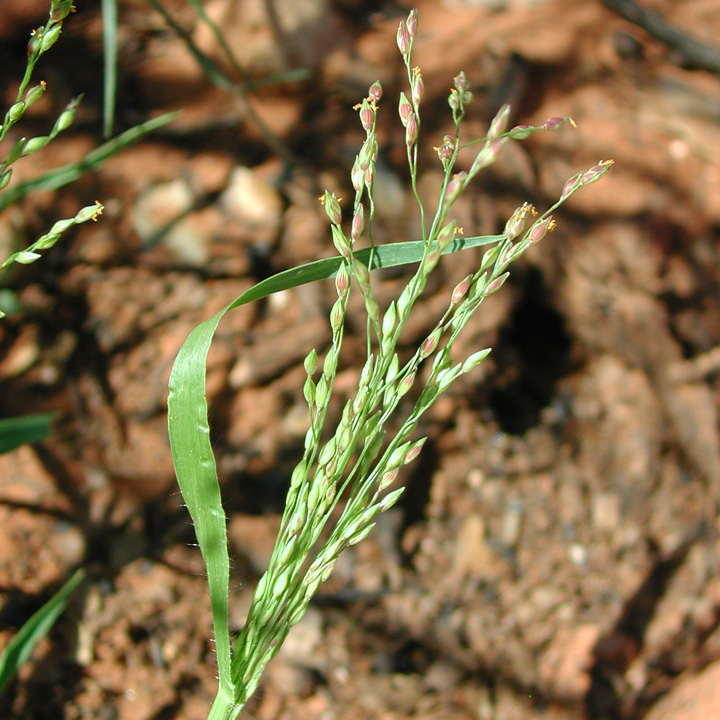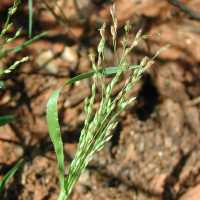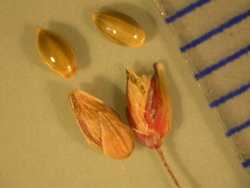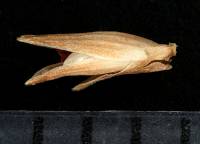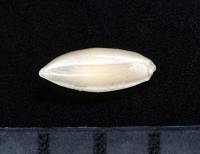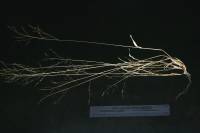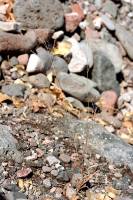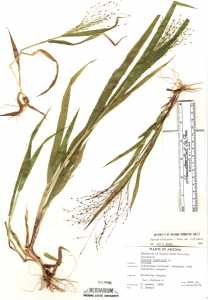Annuals, Terrestrial, not aquatic, Stems nodes swollen or brittle, Stems erect or ascend ing, Stems geniculate, decumbent, or lax, sometimes rooting at nodes, Stems caespitose, tufted, or clustered, Stems terete, round in cross section, or polygonal, Stems branching above base or distally at nodes, Stem internodes hollow, Stems with inflorescence less than 1 m tall, Stems, culms, or scapes exceeding basal leaves, Leaves mostly cauline, Leaves conspicuously 2-ranked, distichous, Leaves sheathing at base, Leaf sheath mostly open, or loose, Leaf sheath hairy, hispid or prickly, Leaf sheath and blade differentiated, Leaf blades lanceolate, Leaf blades ovate, Leaf blades 2-10 mm wide, Leaf blades 1-2 cm wide, Leaf blades mostly flat, Leaf blades mostly glabrous, Leaf blades more or less hairy, Leaf blades scabrous, roughened, or wrinkled, Ligule present, Ligule a fringed, ciliate, or lobed membrane, Inflorescence terminal, Inflorescence an open panicle, openly paniculate, branches spreading, Inflorescence solitary, with 1 spike, fascicle, glomerule, head, or cluster per stem or culm, Inflorescence branches more than 10 to numerous, Peduncle or rachis scabrous or pubescent, often with long hairs, Flowers bisexual, Spikelets pedicellate, Spikelets dorsally compressed or terete, Spikelet less than 3 mm wide, Spikelets with 1 fertile floret, Spikelets with 2 florets, Spikelet with 1 fertile floret and 1-2 sterile florets, Spikelets solitary at rachis nodes, Spikelets all alike and fertille, Spikelets bisexual, Spikelets disarticulating below the glumes, Rachilla or pedicel glabrous, Glumes present, empty bracts, Glumes 2 clearly present, Glumes distinctly unequal, Glumes equal to or longer than adjacent lemma, Glume equal to or longer than spikelet, Glumes 3 nerved, Glumes 4-7 nerved, Lemma similar in texture to glumes, Lemma 8-15 nerved, Lemma glabrous, Lemma apex truncate, rounded, or obtuse, Lemma awnless, Lemma margins inrolled, tightly covering palea and caryopsis, Lemma straight, Palea present, well developed, Palea about equal to le mma, Stamens 3, Styles 2-fid, deeply 2-branched, Stigmas 2, Fruit - caryopsis, Caryopsis ellipsoid, longitudinally grooved, hilum long-linear.
Common Name: Mexican panicgrass
Duration: Annual
Nativity: Native
Lifeform: Graminoid
General: Annual grass, 20-110 cm tall; stems erect to decumbent, the nodes glabrous or shortly hirsute; herbage glabrous or hispid with papillose-based hairs.
Vegetative: Sheaths shorter than the internodes, greenish to purplish, glabrous or with papillose-based hairs, ciliate on one margin and glabrous on the other; collars hirsute; ligules of hairs, 1-3 mm; blades flat with clasping bases, 3-30 cm long, 3-30 mm wide, usu
Inflorescence: Panicles 9-30 cm long, 5-8 cm wide, erect or nodding, primary branches divergent, secondary branches and pedicels appressed, confined to the distal 2/3 of the primary branches; spikelets 2-4 mm long, ovoid, reddish-brown with prominent veins, 2-flowered, the first floret reduced to a sterile lemma and the second floret fertile. Lower glumes 3-5-veined; upper glumes 7-11-veined; lower lemmas similar to the upper glumes, 9-veined; upper lemma indurate, 2 mm long, ellipsoid, smooth or conspicuously papillate, shiny, stramineous.
Ecology: Found on dry slopes and plains, sandy washes, and open woodlands below 7,000 ft (2134 m); flowers July-October.
Distribution: OR south to NV and CA, east to TX and OK; south to S. Amer.
Notes: The genus Panicum is defined as having unawned spikelets with 2 florets, the first floret sterile or staminate, and the second floret bisexual with a rigid lemma that clasps the palea. P. hirticaule is an erect to decumbent annual with broad, flat leaves; a panicle that is about <1/3 of the stem length; an acute 1st glume (see illustration) and spikelets, <4 mm long. Like many of the annual Panicum spp. in AZ, this species was once classified as a variety of P. capillare (Gould 1951). It is distinguished from P. capillare by its shorter pedicels < 8 mm long and its panicle branches that tend to be more stiff, straight, and ascending rather than gently curving and widely diverging as in P. capillare. FNA recognizes 3 varieties, all found in the Southwest. P. h. var . hirticaule is most common, with blades rounded at the base; lower paleas less than 1/2 as long as the upper florets; and erect panicles. P. hirticaule var. stramineum has blades with a clasping base; panicles often nodding; herbage glabrous or sparsely pilose; culms < 70 cm tall; and spikelets 3.2-4. mm. P. h. var. sonorum has blades with a clasping base; panicles often nodding; hirsute herbage; culms > 70 cm tall; and spikelets 3-3.3 mm.
Ethnobotany: Seeds were ground into a meal and used for making flour and bread by the Cocopa.
Etymology: Panicum is a classical Latin name for millet, hirticaule means hairy-stemmed.
Synonyms: Panicum pampinosum, P. alatum and others, see Tropicos
Editor: SBuckley 2010, FSCoburn 2014, AHazelton 2015


